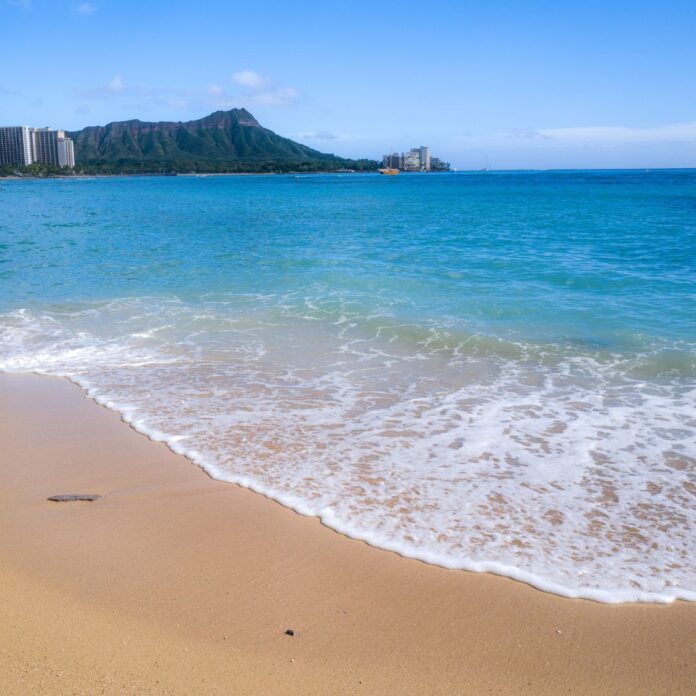One of the things I enjoy doing when visiting a place is a nice long walk to take in the sights and sounds of a place. This Waikiki beach walking tour is for those who enjoy seeing a place without any fluff.
The video below is recorded with a binaural microphone which means if you are wearing both earpieces or headphones it will sound as if you are walking along with me. I encourage you to try and watch the video this way, it truly is an immersive experience and you will feel as if you are walking along with me on a Waikiki beach walking tour.
For those that like to read…
Waikiki Beach Walking Tour Starting Point
I am standing on what was the mouth of Kuekaunahi stream, one of three that flowed from the mountains down through the marshes of Waikiki. The Waikiki area was a marsh before the Ala Wai Canal was built.
This tour starts out at the Kapahulu groin or more commonly, Waikiki Walls ( or just Walls ). Waikiki Wall is a popular body boarding spot with powerful waves that break on a shallow reef, making it a popular spot for experienced body boarders. The waves can get very crowded, especially during weekends and school holidays.
Kuhio Beach Area
This is Kuhio Beach and runs from the wall down to the Moana Surfrider hotel. Named after Prince Jonah Kūhiō Kalaniana’ole, Hawaii’s second Delegate to the United States Congress he was best known for the passage of the Homes Commission Act.
Kūhiō’s early education was in Honolulu at St. Alban’s College and O‘ahu College, known today as ‘Iolani and Punahou Schools.
He was instrumental in the establishment of Hawai’i Volcanoes National Park, Makapu’u Point Lighthouse (one of the best Oahu sunrise hikes), and the construction of Pearl Harbor. You can learn more about him on his Wikipedia page.
This walled-off area is sometimes referred to as “Ponds” great place for the kids and those looking for calmer water in Waikiki.
Gray’s Beach
This area outside of the Halekulani Hotel is called Gray’s Beach. It got this name from a boarding house that was called “Grays By The Sea”, it was later incorporated into the Halekulani Hotel. Halekulani means “house befitting heaven”.
This section of the beach is also called, Kawehewehe, which means to remove. For centuries, Hawaiians have come here to heal spiritual and physical ailments. You can spot it from above by looking for the clear stretch of sand bordered by reefs on both sides. When I was staying at the Halekulani Hotel I snagged this photo.

This restaurant here, House Without A Key, was also the name of the first book in the Charlie Chan detective series. The author, Earl Derr Biggers, wrote the book while staying at Gray’s By The Sea boarding house.
Fort DeRussy Beach Park
In this area once stood the home of Chun Afong the first Chinese millionaire in Honolulu who held a monopoly on the government opium license.
He was the inspiration for the short story, Chun A Chun by Jack London. With 16 children, 13 of which were daughters it is indeed an interesting piece of history.
In 1904 the U.S. Army Corps of Engineers purchased the property and built two batteries to defend Honolulu harbor. Constructed of reinforced concrete walls and a 12 foot thick roof it was intended to last. In fact, in 1969 they tried to demolish it and even the wrecking ball struggled. In 1976 it became the home of the U.S. Army Museum.
Duke Kahanamoku Beach
Named after the native Hawaiian and olympian, Duke Kahanamoku, it is located right outside the Hilton Hawaiian Village. The statue of Duke Kahanamoku that so many know is back near Kuhio beach just left of the Waikiki Police substation.
Have you walked the same path as my Waikiki Beach walking tour? What time of day did you do it at?












